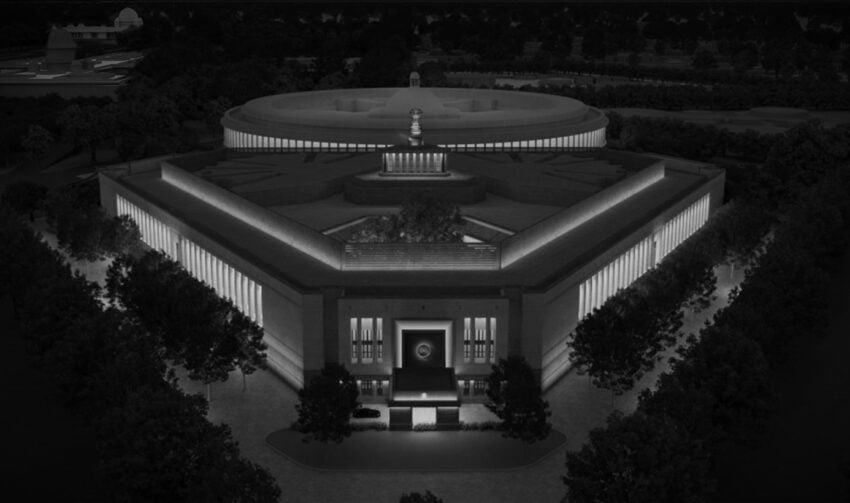Introduction:
India’s democratic voyage, shaped by a rich tapestry of historical intricacies, unveils a narrative of resilience and adaptability. This comprehensive exploration seeks to dissect the historical intricacies that led to India’s embrace of a parliamentary system post-independence. Beyond a mere chronological account, we embark on a meticulous journey through colonial legacies, scrutinize the Constituent Assembly debates, and delve into the multifaceted factors that have shaped India’s political destiny. Moreover, a thorough comparative analysis of parliamentary and presidential systems elucidates the historical underpinnings, advantages, and disadvantages of each. This exhaustive examination aims not just to narrate but to unravel the intricate tapestry of India’s political evolution.
Colonial Roots and the Dawn of Legislative Experimentation
Colonial Governance and Early Legislative Endeavors:
India’s dalliance with legislative governance commenced with the Government of India Act of 1858, a pivotal shift from East India Company rule to direct British control. This act introduced legislative councils, marking the inception of a rudimentary form of Indian representation. However, it was the Government of India Act of 1919 that ushered in a more significant phase with the concept of dyarchy, establishing a dual system of governance with British-appointed officials and Indian ministers.
Nationalist Struggles and the Quest for Self-Rule:
The early 20th century witnessed the burgeoning of the nationalist movement as India ardently sought self-rule. The Montagu-Chelmsford Reforms of 1919 provided Indians with a limited but significant share in legislative affairs, laying the groundwork for greater political participation. This period of legislative experimentation and the maturation of political consciousness set the stage for the complexities of post-independence governance.
The Post-Independence Constitutional Framing
Constituent Assembly Deliberations:
The Constituent Assembly debates, a crucible for shaping India’s future, saw luminaries like Jawaharlal Nehru, B.R. Ambedkar, and Sardar Patel navigating the nuances of constitutional provisions. Beyond constitutional drafting, these deliberations extended to defining the very essence of India’s political identity. The assembly didn’t merely draft a constitution; it defined the ethos of a nation.
The Advent of the Parliamentary System:
Amidst fervent debates, the assembly made a pivotal choice in favor of a parliamentary system. Inspired by the Westminster model, the framers ingeniously integrated executive and legislative powers, devised mechanisms of collective responsibility, and instituted a ceremonial head of state. This section scrutinizes the motivations behind this choice, unraveling the intricate interplay of historical legacies and contemporary imperatives.
Historical Rationale:
The historical rationale behind opting for a parliamentary system is a mosaic of diverse factors. The need for stability in a country marked by linguistic, cultural, and religious diversity, the familiarity ingrained during the colonial period, and the imperative to ensure representation and accommodation for diverse voices influenced the decision-making process. This section strives to unravel the nuanced interplay of these factors.
A Comparative Odyssey: Parliamentary vs. Presidential Systems
Presidential Systems: A Microscopic Examination:
While India embraced the parliamentary model, other nations, particularly the United States, opted for a presidential system. This section offers an intricate exploration of the U.S. Constitution, delving into the strict separation of powers, the direct election of the President, and the resultant executive independence from legislative entanglements.
Advantages and Disadvantages of Parliamentary Systems:
An exhaustive analysis unfolds the advantages of parliamentary systems – political stability, quick decision-making, and accountability. Simultaneously, it scrutinizes the challenges, including potential instability in coalition governments and concerns about executive dominance.
Advantages and Disadvantages of Presidential Systems:
Comparatively, this section embarks on a detailed journey into the advantages of the presidential system, such as clear accountability and separation of powers, while also exploring the drawbacks, such as potential gridlock between branches and challenges in responding swiftly to emerging issues.
Contemporary Dynamics and the Adaptive Resilience of India’s Governance Model
Relevance and Adaptability Today:
Against the backdrop of contemporary India, this section evaluates the relevance and adaptability of the parliamentary system. Considering socio-economic developments, the evolving political landscape, and emerging challenges, it reflects on whether the chosen governance model continues to be resilient and adaptive.
Challenges and Prospects:
No governance model is immune to challenges. This section addresses contemporary challenges faced by the parliamentary system in India, such as legislative efficacy, the evolving role of the President, and the impact of coalition politics. It also explores potential reforms that could enhance the system’s responsiveness.
Navigating the Uncharted: Future Trajectories of India’s Democratic Governance
Adapting to Contemporary Realities:
As India stands at the precipice of new challenges and opportunities, the parliamentary system faces the litmus test of adaptability. This section delves into the ways in which the system can evolve to meet contemporary challenges, including technological advancements, social changes, and global dynamics.
Inclusive Governance for the 21st Century:
The future trajectory of India’s democratic governance involves addressing issues of inclusivity, representation, and equitable development. This section explores potential reforms and policy directions that can ensure the continued vibrancy of the parliamentary system, making it more responsive to the diverse needs of the Indian populace.
Conclusion:
India’s evolution from colonial rule to a robust parliamentary democracy is not a static narrative but an ongoing saga. The choice of a parliamentary system was not just a constitutional preference but a reflection of India’s aspirations for stability, inclusivity, and representative governance. As the nation strides into uncharted territories, an ongoing dialogue about the adaptability of its political institutions remains paramount. This exhaustive exploration seeks to provide not just a historical account but a nuanced understanding of the factors influencing India’s governance model, emphasizing the dynamic nature of its democratic trajectory.
share post on

Author- Lexosphere
Unleash the power of legal knowledge

